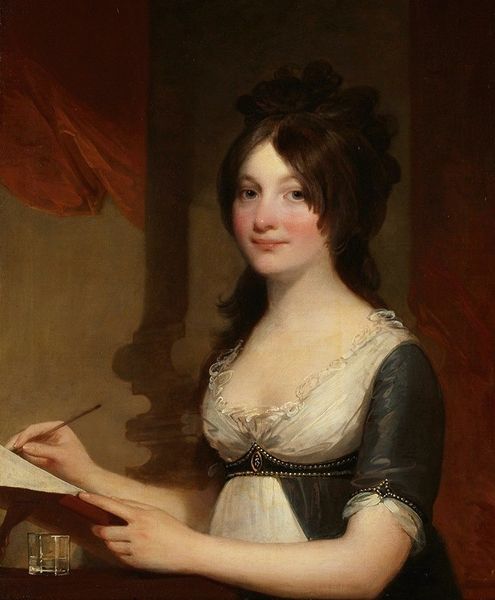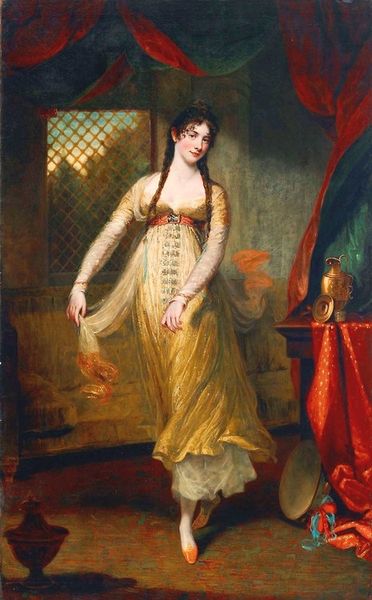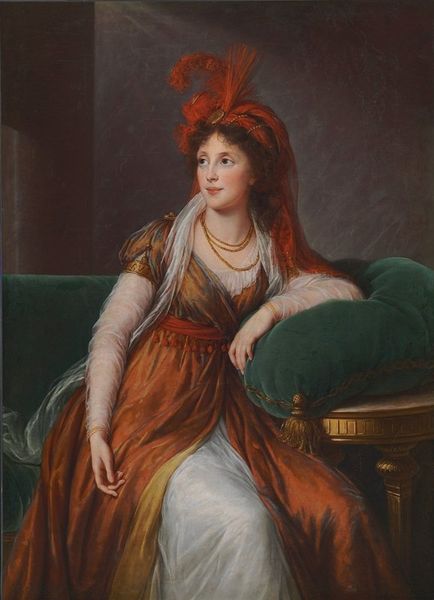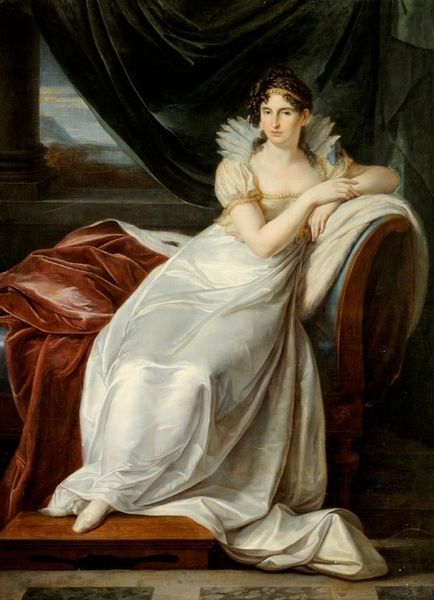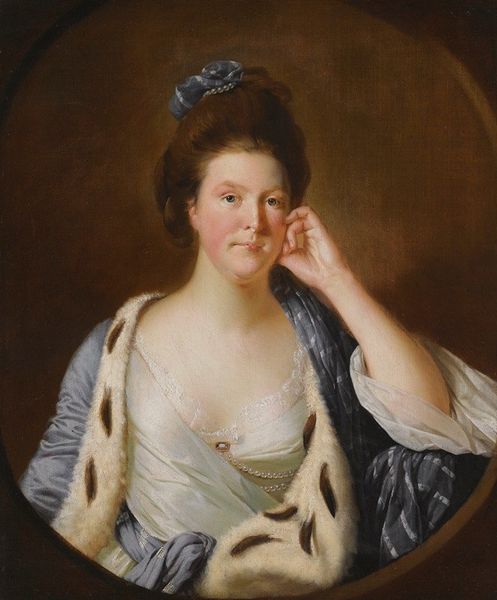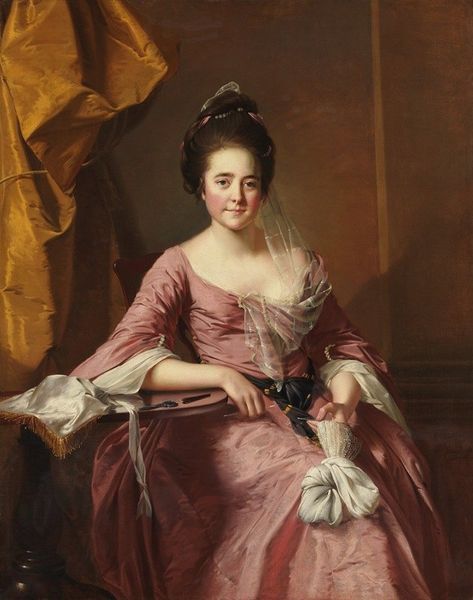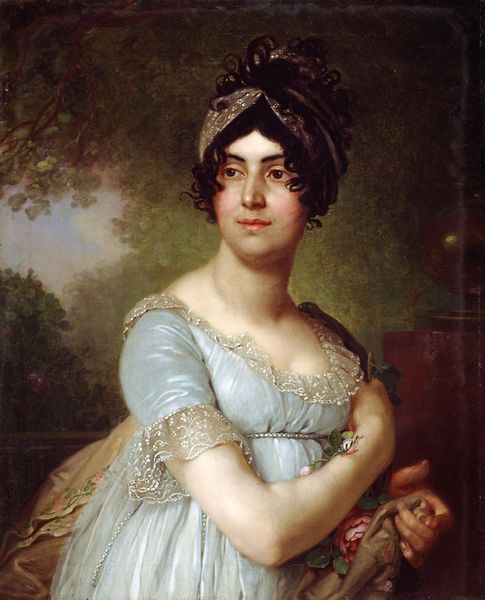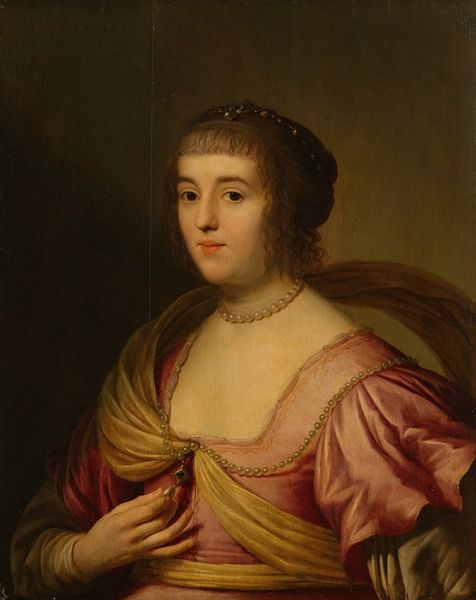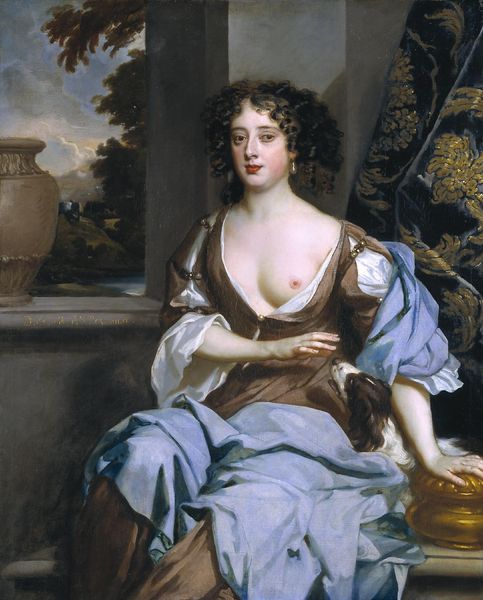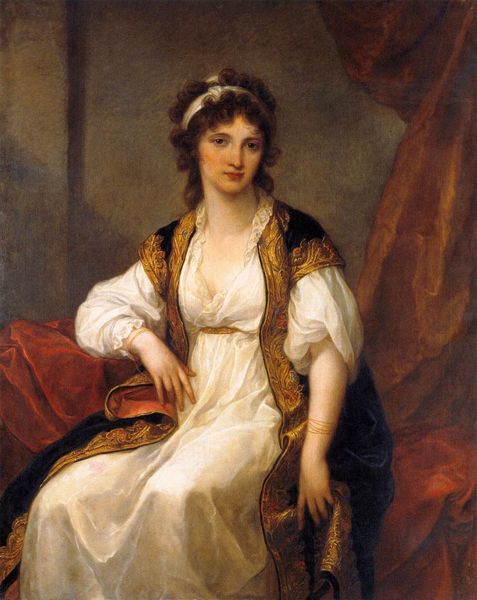
Dimensions: 131 x 103 cm
Copyright: Public domain
Editor: Here we have Angelica Kauffmann's "Portrait of a Woman at Her Toilet," painted in 1795, rendered in oil. The composition feels very deliberate. What is your reading of this painting, in terms of the social context of its making? Curator: Consider the materials, the oil paint, ground pigments traded globally to reach Kauffmann's studio. What kind of labour and systems underpinned this very act of creation? The 'toilette' scene, a display of female beautification, simultaneously conceals the complex social forces involved in acquiring the objects displayed – the cosmetics, jewellery, fabrics. Kauffmann isn’t merely depicting a lady, but subtly revealing a world of production. What is your perspective on this contrast? Editor: That's a really interesting perspective. I hadn't thought about it in terms of consumption and labor, only of the intimate portrait of a woman getting ready. So, do you see the red curtain and the jewelry box as almost props then, underscoring her social position? Curator: Precisely! They highlight the material reality supporting her performance of femininity. Who benefits from this spectacle? We should ask ourselves, who produced the raw materials? The objects. Think about the colonial structures of power. This goes beyond aesthetics. How does understanding those production and distribution systems alter your viewing experience? Editor: It complicates it significantly! It adds a layer of... almost guilt, I guess, in appreciating the visual beauty without acknowledging the social cost. Curator: A vital recognition! Consider further how these artworks circulated within a wealthy patronage system. Kauffmann's own success as a woman artist depended on navigating these constraints and celebrating elite tastes. She challenges and yet, supports these ideas, no? Editor: Yes, that adds another layer of understanding, seeing Kauffmann as actively engaged in and commenting on the structures around her through the materials themselves. Curator: Exactly. The painting serves as a prompt to look critically at production, labor, and the systems that connect it all. I will carry these new ideas into further studies, thank you for showing a new aspect of that time period!
Comments
No comments
Be the first to comment and join the conversation on the ultimate creative platform.
